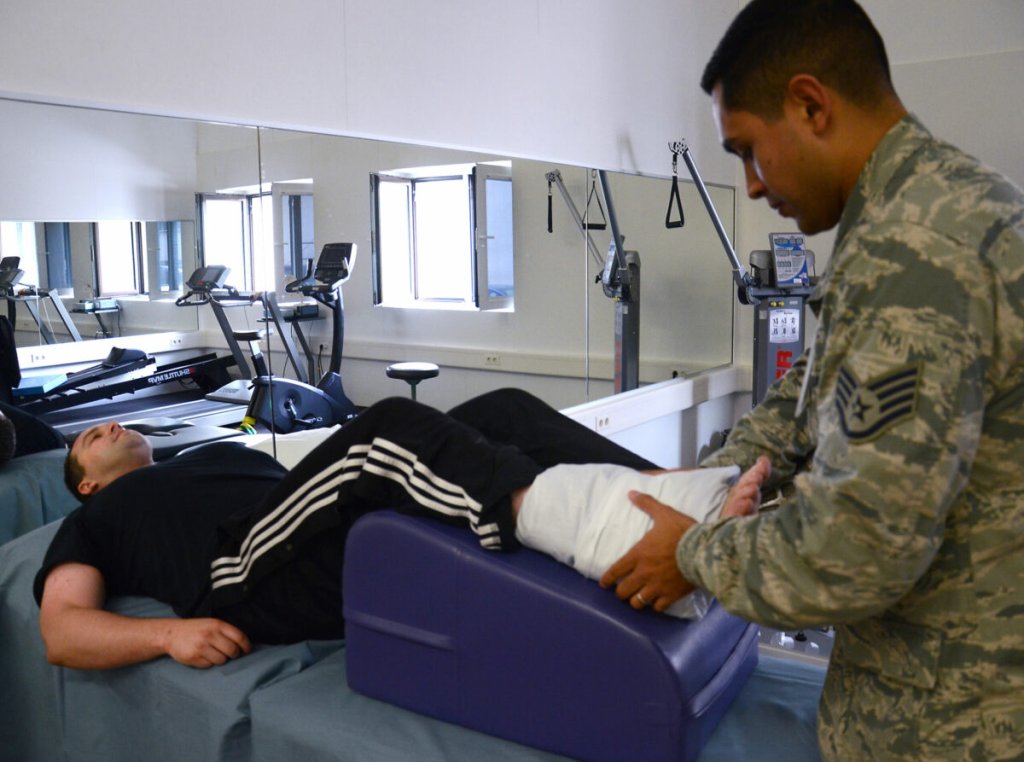

Those suffering from injuries will do and try just about anything to relieve pain. With musculoskeletal injuries being a top health problem for the U.S. Armed Forces, it’s time to prioritize better treatments and solutions.
A recent report by Walter Reed and the Uniformed Services University of the Health Sciences found that 3/4 of medically non-deployable service members are sidelined due to musculoskeletal injuries, and 68,000 service members fall into that category each year. Studies suggest that non-combat musculoskeletal injuries could account for nearly 60% of soldiers’ limited duty days and 65% of soldiers who cannot deploy for medical reasons.
Throughout my five years working with the military, currently with units from every branch, including Special Operations Command and the Reserve Component, the most common musculoskeletal injuries I see our service members suffer from are lower back pain and lower leg issues, with the former being at the top of the list for the warfighter. Lower leg issues are a close second, with those injuries ranging from shin splints and stress reactions to stress fractures.

These two injuries are the most common across the force, but each branch exhibits certain types more than others. For example, the Air Force tends to suffer from lower back injuries because Airmen are sitting in cramped areas for an extended period. Additionally, they are at an increased risk for spinal injuries, neck, and back. The neck becomes an issue because jets are faster and helmets have more tech, making them heavier. Confined spaces, faster jets, and heavier helmets make a great recipe for spinal injuries.
However, the Army is the best example of lower leg injuries because they tend to cover the most mileage on rugged terrain over long distances.
Although these two branches stand out for certain types of injuries, nearly every service member will suffer from some musculoskeletal injury during their career and seek the best solution for recovery and pain relief.
Whether information is found on the internet or received from a doctor, it is typically seen as the magic cure by the patient seeking help.

While there are certainly good doctors and sound advice online, each injury and individual require specific, personalized treatment. As an expert in using Force Plate Machine Learning™ (FPML™) to identify, prevent and treat musculoskeletal injuries, I encourage military leaders to seek out programs that focus on the individual warfighter’s health and fitness needs. Solutions like FPML™ will allow for early identification of musculoskeletal weakness and help create individualized training programs to prevent future injury.
Practices that utilize evidence-based, individualized solutions are best for preventing injuries and correctly training the body but understanding that this technology is not yet widely used by the Service, I will share some generic at-home remedies for common service member injuries, as well as dispel myths about well-known treatments.
The easiest way to make an injured area feel better is to stimulate or contract the opposite area. For example, if suffering from back pain, a solution can be working your abdominals with exercises like the plank. This is because the human body has antagonistic relaxation – meaning when one muscle group fires, the other is inhibited. Therefore, activating the abdominal muscles will, in turn, relax the back muscles and provide relief.

The quick and easy treatment used by traditional doctors reluctant to adopt more complex solutions is RICE. We’ve all heard it: rest, ice, compression, elevation. Sure, ice is great as an anesthetic (a numbing agent) for short-term pain relief immediately after injury. It will hide the pain and help with performance for about 5-60 minutes post-injury. But after that, ice and RICE will significantly prolong the healing process.
Both RICE and ibuprofen (Advil) actually delay the healing process and can be harmful to the body’s recovery. Many doctors still prescribe the nifty acronym because it’s easy to remember for the physician who is still operating in the 1980s.

RICE exemplifies the power of simplification and reinforces the idea that people will try just about anything – opioids, RICE, or over-the-counter painkillers when in pain.
In reality, movement is the best medicine, with data-driven, individualized movement plans being effective solutions that can help reduce chronic pain and injuries.
Dr. Phil Wagner is a physician, strength & conditioning coach, and expert on using force plates and machine learning to prevent and treat musculoskeletal injuries. He is the founder and CEO of Sparta Science.
Feature image: U.S. Air Force photo/Senior Airman Timothy Moore
